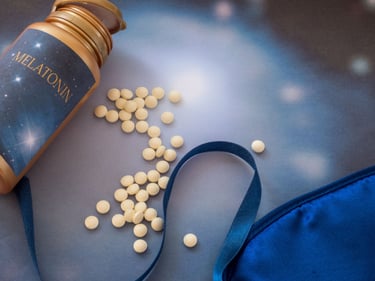eStoreRx™
Online Supplement Dispensary
eStoreRx™ is an easy direct-to-patient ordering & fulfilment program for lifelong wellness.
For over 40 years, Biotics Research Corporation has revolutionized the nutritional supplement industry by utilizing “The Best of Science and Nature”. Combining nature’s principles with scientific ingenuity, our products magnify the nutritional
eStoreRx™ is an easy direct-to-patient ordering & fulfilment program for lifelong wellness.
Biotics Research is proud to expand our commitment to education with the Wellness Unfiltered Pro Podcast. Each episode delves into key health topics and the clinical applications of our premier products. Through candid, insightful conversations, our team offers practical guidance to keep you informed and empowered as a healthcare professional.
December 18 2025
Low-carbohydrate diets are perhaps most popular for weight loss, but the strictest form of carbohydrate restriction – a ketogenic diet – has been show...
 Melatonin is an uncommonly effective direct free radical scavenger and indirect antioxidant. It detoxifies both reactive oxygen species (ROS) and reactive nitrogen species (RNS), both of which are produced in the brain. Researchers from the Dept. of Cellular and Structural Biology, University of Texas Health Science Center in San Antonio, conducted and published a review of melatonin’s role in detoxifying and metabolizing ROS and RNS. Melatonin, from either the blood or the cerebrospinal fluid (CSF), readily enters the brain to protect neurons and glia from molecular damage induced by ROS and RNS. Melatonin’s efficacy in reducing molecular damage resulting from toxic oxygen and nitrogen derivatives in both the brain and spinal cord supports the concept that this non-toxic molecule may have utility in forestalling and/or delaying the development and progression of neurodegenerative diseases that have a massive free radical component. Disease models of interest and in which melatonin has been most thoroughly tested include Alzheimer disease, Parkinson disease, and to a lesser extent Huntington disease and amyotrophic lateral sclerosis. Their summarization of experimental findings clearly document that melatonin readily prevents oxidative damage to both neurons and glia, and in doing so, greatly reduces apoptosis of critical cells within the central nervous system.
Melatonin is an uncommonly effective direct free radical scavenger and indirect antioxidant. It detoxifies both reactive oxygen species (ROS) and reactive nitrogen species (RNS), both of which are produced in the brain. Researchers from the Dept. of Cellular and Structural Biology, University of Texas Health Science Center in San Antonio, conducted and published a review of melatonin’s role in detoxifying and metabolizing ROS and RNS. Melatonin, from either the blood or the cerebrospinal fluid (CSF), readily enters the brain to protect neurons and glia from molecular damage induced by ROS and RNS. Melatonin’s efficacy in reducing molecular damage resulting from toxic oxygen and nitrogen derivatives in both the brain and spinal cord supports the concept that this non-toxic molecule may have utility in forestalling and/or delaying the development and progression of neurodegenerative diseases that have a massive free radical component. Disease models of interest and in which melatonin has been most thoroughly tested include Alzheimer disease, Parkinson disease, and to a lesser extent Huntington disease and amyotrophic lateral sclerosis. Their summarization of experimental findings clearly document that melatonin readily prevents oxidative damage to both neurons and glia, and in doing so, greatly reduces apoptosis of critical cells within the central nervous system.
RJ Reiter, et al. Melatonin Reduces Oxidative Catastrophe in Neurons and Glia. Act Nerv Super Rediviva 2010; 52(2): 93-103
Submit this form and you'll receive our latest news and updates.
*These statements have not been evaluated by the Food and Drug Administration. This product has not intended to diagnose, treat, cure, or prevent any disease.
Proposition 65 Warning
© 2025 Biotics Research Corporation - All Rights Reserved
Submit your comment